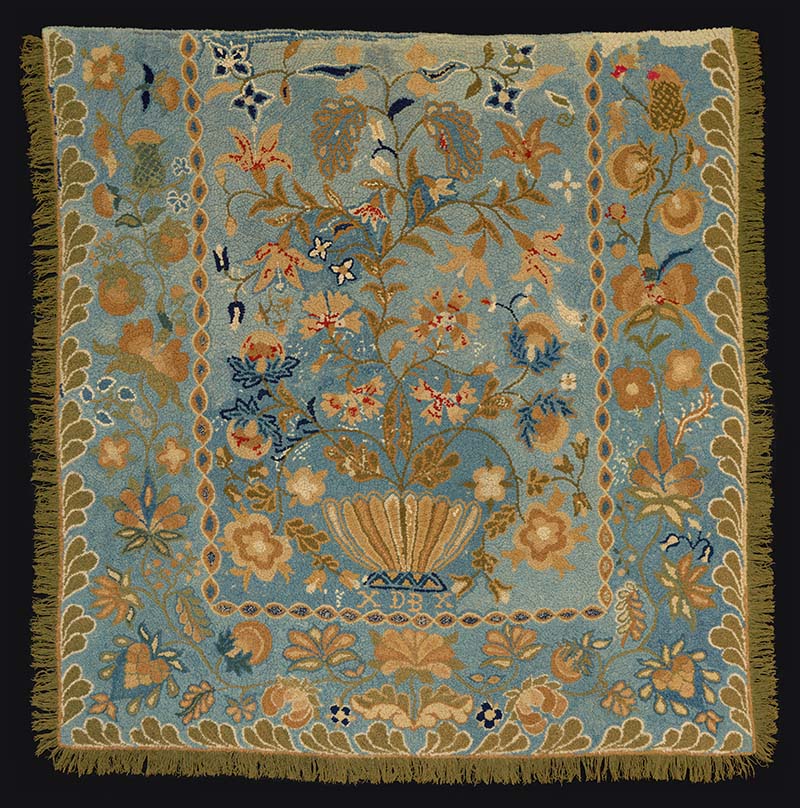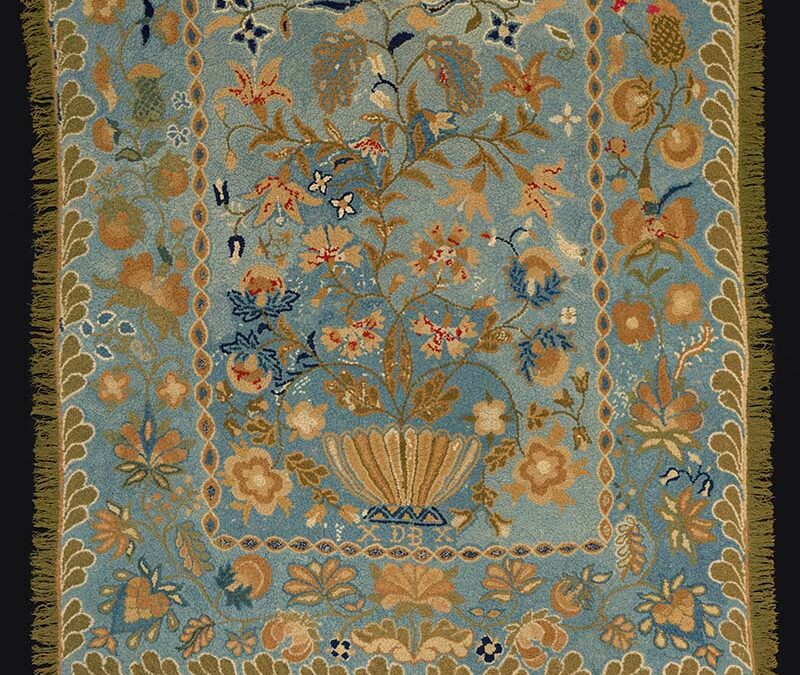
| Maker | Deborah Loomis Brace (American, 1752–1839) |
| Date of Creation | Probably 1772 |
| Location | Torrington, Connecticut |
| Materials | Hand-spun wool |
| Institution | Yale University Art Gallery |
| Credit Line | Mabel Brady Garvan Collection |
| Accession Number | 1934.378 |
| Photo Credit | Yale University Art Gallery |
Made during the runup to the Revolution, this bed rug embodies the sophisticated aspirations of many colonists. Bedding textiles—blankets, curtains, coverlets, and bed rug—were valuable parts of a New England household in the 18th and early 19th centuries. They not only kept sleepers warm at night during long, cold winters, but they also were often the most expensive item in many homes. This bedcover is one of several surviving examples from rural New England that date from the period. Commonly referred to as “rugs” at the time, these works were made from loops of yarn sewn to or looped through a loosely woven backing. The daughter of a prosperous farmer, Deborah Loomis made this rug likely around the time she married Abel Brace, another successful farmer, of Torrington, CT, in 1772. Her married initials, “DB,” appear below the central vase motif, and the two Xs on either side of her initials may refer to her age — she would have been about twenty when she married Brace. This rug was likely among the household textiles she assembled to bring to her new home upon her marriage. Family lore held that Deborah Brace designed and made this rug herself, using yarn she had spun and dyed, and applying it to a backing fabric she handwove. At the center of the rug is a vase from which sprout flowering vines, a stylistic element directly modeled on the tree-of-life designs that were often depicted on expensive imported Indian palampores, painted- cotton bed hangings. Bed rugs were not the only American-made products of the period that imitated these designs; ceramics, crewel embroideries, samplers, and even details on furniture all reproduced the flowing floral imagery—material evidence of the global trade in goods and designs in the 18th century (adapted from text by Erin E. Eisenbarth).

